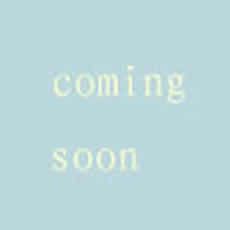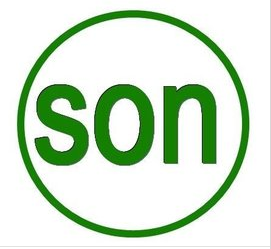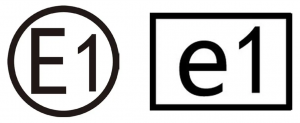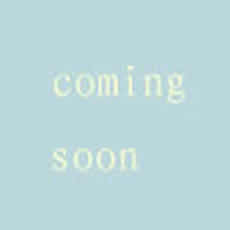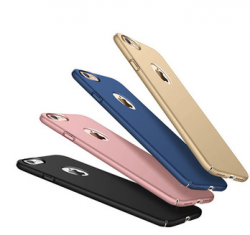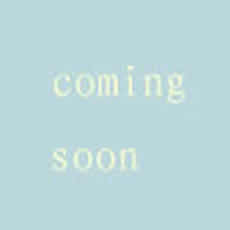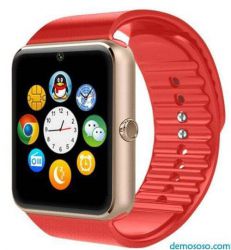CB introduction
CB system (electrical products qualified testing and certification IEC system) is an international system operated by IECEE, IECEE member states certification bodies based on IEC standards to test the safety performance of electrical products, the test results of the CB test report and CB test certificate in IECEE member states are mutually recognized system. The aim is to reduce international trade barriers arising from having to meet different national certification or approval guidelines. IECEE is the abbreviation of the International Electrotechnical Commission electrical products Conformity Testing and certification organization.
CB is a widely adopted product certification mutual recognition program in the five continents of the world, which marks the compliance of certified electrical products
The IEC standard, the CB program is recognized globally by CB member countries and non-CB member countries and regions. The CB program, which was established in 1961 as a safety certification program, now covers EMC standards. At present, there are 56 CB member countries, including:
America
Asia
Europe
United States, Canada,
China, Korea, Japan,
UK, Ireland, Sweden, Spain,
Brazil, Argentina,
India, Thailand, Pakistan,
Germany, Russia, Norway, Portugal,
Mexico, Colombia
Singapore, Malaysia,
France, Switzerland, Austria, Hungary,
Indonesia, Bahrain,
Finland, Italy, Denmark, Ukraine,
Saudi Arabia, Israel, Vietnam
Netherlands, Belgium, Poland, Turkey,
South, United Arab Emirates,
Slovakia, Belarus, Greece,
Kazakhstan, Iran
Serbia, Croatia, Romani
Africa
Oceania
Asia, Bulgaria, Czech Republic, Sloven
South Africa, Kenya, Libya
Australia, New Zealand
Niah
Regular program
The rules and procedures of the CB system are published in the following IEC publications:
IECEE 01 (Basic Rules and Procedures of IECEE)
IECEE 02 (Rules and Procedures for CB Systems)
IECEE 01 describes the organization of IECEE, membership, Accreditation Management Committee (CMC), Testing Laboratory Committee (CTL), Appeals Committee, the functions and responsibilities of these committees and their officers, and the overall management of IECEE.
IECEE 02 describes the role of the CB system, the recognition of the standards of NCB and CB laboratories and the basis for extending their scope, the procedures for issuing and processing CB test certificates, and the requirements for the use of manufacturers' test facilities.
Test certificate
This certificate is the International Electrotechnical Commission Electrical Product Safety Certification Organization (IEcEE) certification body Committee (CCB) unified development, issued by a certification and accreditation national certification body issued by the document (see figure below), together with the attached test report used to inform other national certification bodies, One or more samples of an electrical product have been tested to a standard adopted by the Positive CEE and have been shown to conform to that standard. The cB test certificate shall be valid only if accompanied by the relevant test report, which shall include the results of the tests carried out according to the relevant standards and, where required, according to the declared national differences. Table 1 shows the catalogue of IEcEnCB certification products. The cB test certificate may not be used for any form of advertising or promotional activities, but the CB test certificate holder may mention having the CB test certificate for the product in business communications. As of July 1992, there were 30 member countries of the cB system. They are Austria (AT), Australia (AU), Belgium (BE), Canada (CA), and Switzerland (CII). China (CH), former Czecrodek (Cs), Germany (DE), Denmark (DK), Spain (Es), Finland (Fi), France (FU), United Kingdom (oI3), Greece (GR), Hungary (nU, Ireland (IE), Israel (it), India (IN), Iceland (is), Italy (r), Japan (SV), South Korea (KR), Netherlands (NT), Norway (No), Poland (PL), Sweden (sD, Singapore (SG), former Soviet Union (SH), Former Yugoslavia (YU), United States (Us). These 30 Member States, when they apply to join the IECEE-CCB as a member of the cB system, should declare that they recognise those IEC standards adopted by 1ECEE (see Table 2) and indicate that for national differences in the recognised standards, if any, the differences stated by the countries are classified into two types: differences from their national standards' indicates; There is a difference with its group, indicated by "C "; Indifference is denoted by "r ". (See Table 3). Specific differences between national declarations and the respective IEC standards are set out in Chapter 4. In the following cases, the issuing national certification body can revoke the CB test certificate: abuse of the certificate, the certificate was issued in error, the product no longer matches the sample tested and described in the test report, the certificate holder requests the cancellation. When a CB test certificate has been revoked, the issuing national certification body must notify the CCB Secretary as soon as possible and state the reasons for revocation. The CCB Secretary must notify the manufacturer and all national certification bodies participating in the CB system with respect to the standard that a CB test certificate has been revoked and state the reasons for the revocation. Each relevant national certification body may decide for itself whether to withdraw the national certification or recognition made on the basis of the CB test certificate.
effect
Enterprises that obtain cB test certificates are conducive to the export of electrical products for homes, offices, workshops and similar places "directly related to personal safety, such products in some countries to implement mandatory certification, that is, after obtaining the country's certification certificate, they are allowed to export to the country and sell in the country's market." Even in countries that do not implement mandatory certification, consumers are willing to buy certified products with certification marks for their own safety. Therefore, large department stores only sell certified products, and the price is higher than the uncertified products, just as China sells power tools to Hong Kong businessmen, they obtain CB certificate products than uncertified products, the price of each more than 2 US dollars, certified products can protect the user's personal safety, easy to sell and the price is relatively high, in addition, Enterprises selling uncertified products also bear the risk of compensation for losses, once judged due to the product to the consumer's personal or property losses, enterprises have the responsibility to compensate. This kind of accident will bring negative consequences to our country in the international market, and such products will be difficult to find customers in international trade. As a result, not only did they suffer financially, but they also lost credibility. How to obtain the certification certificate of the importing country, you can use two procedures to obtain the certificate: the first procedure is that the product has obtained the CB test certificate, use the certificate with the CB test report to apply to the importing country's certification certificate; The second procedure is that the product has not obtained the CB test certificate, directly apply to the importing country's certification certificate, if the second procedure is used, the applicant first has to send the sample to the designated testing laboratory in the country according to the number of samples prescribed by the national certification body of the importing country, and pay the test fee. After the sample test is qualified, the country's national certification body sent inspectors or commissioned China's detection station to review the quality assurance ability of the applicant enterprise, after the review, you can obtain the country's certification certificate, use their logo, if the first procedure is adopted, The applicant only needs to send the obtained CB test certificate and CB test report (the well is accompanied by the test results of the different items proposed by the country) to the national certification body of the country, without sending samples or only sending individual samples for review, you can recognize the test results, and finally the national certification body of the country's quality assurance ability of the factory is reviewed and qualified, you can obtain the certification certificate. The logo of the country's certification body may be used. Comparing the two procedures, it is well established that the first procedure is simpler and more economical than the second. After obtaining the CB test certificate issued by the China Electrical Products Certification Commission, the Chinese enterprises apply for the certification certificate of the national certification body of the CB system member states; Economical and time-saving.
Request test
(a) The applicant is the holder of the CB test certificate 1. The applicant can be a business or an agent of a business. In the latter case, documents must be submitted that authorize the applicant to make the application on behalf of the enterprise, and documents must be provided that the enterprise and the applicant bear the same responsibilities. These responsibilities refer to compliance with the rules and procedures of ECEE, the CCEE Charter, the certification rules and procedures, and the relevant national laws of China. Rules and regulations. 2. The application may include one or more manufacturing plants in the applicant's country where the products manufactured will be controlled by the enterprise. 3. When the same product is manufactured in different countries, the applicant should submit a separate application for each country for which he represents the company. 4. If the applicant is in a non-member country of the CCB and is acting for a non-member company, a surcharge must be paid for each application. The amount of the surcharge shall be determined by the Management Committee of IECEE. Unless otherwise agreed, the surcharge shall be collected by the CCEE processing the application and remitted to the IECEE Secretariat for deposit into the CB System account. Note: Wholly-owned enterprises are treated as foreign enterprises, and joint ventures are treated as domestic enterprises.
(2) The preparation before the application - where the applicant has the status of legal person, when its product is ready to be sold to the world market, it is necessary to make it comply with the IEC standards adopted in the CB system in the product development and design stage (see Table 1), and also consider the differences between the national standards of CCB member states and the 1EC standards. Before submitting the application and sending samples, the applicant should confirm that its products comply with the IEC safety standards and the relevant differences in the national standards of the exporting country. - Appoint a person within the organisation to handle the application for, sample delivery, certification and post-certification matters from the cB test certificate and make him/her aware of the CB procedure.
(3) Application procedures1. After completing the preparation of the application, the applicant will contact the CCEE Secretariat to obtain the application form for CB Test Certificate printed by CCB (see Figure 2). The letter states the applicant's name, address, national registration number (business license number), telephone number, fax number and product name, model, specification and trademark to be applied for.
2. Upon receipt of the letter, the CCEE Secretariat will send an application form, application procedures and fee requirements to the applicant.
3. After receiving the cB application and relevant materials sent by CCEE Secretariat, the applicant shall fill in the application form (typed in English) according to the requirements of the application, and submit four copies (one original, three copies) to the CCEE Secretariat as a formal application. The applicant shall keep one copy for filing and pay the required fees.
4. If the applicant needs CCEE to prove that its products meet the differences between the national standards of China or other countries to be sold and the corresponding LC standards, then at the same time of submitting the application, it may request the issuance of an application that includes the test report of these differences, and the applicant shall pay additional test fees, which shall be in accordance with the relevant provisions of the fee standard.
5. The ccEE Secretariat has received the applicant's submission (! After the sentinel and the fee, the applicant will be notified within two weeks, and the cB test task notice will be issued to the cB laboratory (according to the division of labor of the cB laboratory, or the laboratory that decides to undertake the task with the relevant institution is the test station).
6. After receiving the notice, the applicant will send samples to the designated CB laboratory as required by the notice.
(4) Issuance of CB test certificate If the test results are qualified, ccEE will issue a cB test certificate to the applicant with the original CB test report attached. If the application contains a difference test, an additional test report will be attached.
Fill in the application
1. Fill out the CB Test Certificate application form in English (typing).
2. The English name of the China Electrical Products Certification Committee should be filled in between the four small black dots on the upper right of the front page of the application.
3. Please fill in the application date clearly.
4. If the applicant and the manufacturer are the same unit, fill in the same name and address in the field respectively.
5. In the column of components used in the whole machine that have obtained the CB test certificate, if any, the name of the component and its cB certificate number should be filled.
6. The legal representative signs, the legal representative's name is typed in Chinese pinyin with a typewriter, and the legal representative personally signs

 English
English
 中文
中文

